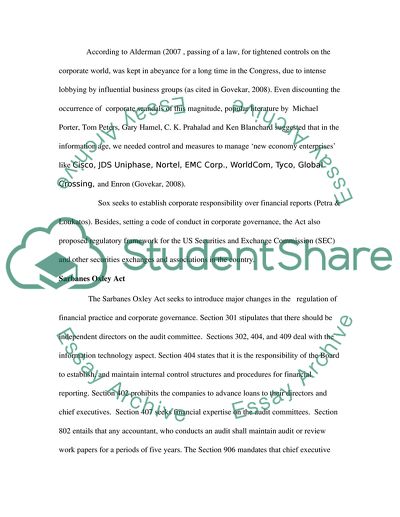Cite this document
(The Sarbanes-Oxley Act of 2004: Boon or Bane to the US Economy Case Study, n.d.)
The Sarbanes-Oxley Act of 2004: Boon or Bane to the US Economy Case Study. Retrieved from https://studentshare.org/macro-microeconomics/1556154-the-sarbanes-oxley-act-of-2004-boon-or-bane-to-the-us-economy
The Sarbanes-Oxley Act of 2004: Boon or Bane to the US Economy Case Study. Retrieved from https://studentshare.org/macro-microeconomics/1556154-the-sarbanes-oxley-act-of-2004-boon-or-bane-to-the-us-economy
(The Sarbanes-Oxley Act of 2004: Boon or Bane to the US Economy Case Study)
The Sarbanes-Oxley Act of 2004: Boon or Bane to the US Economy Case Study. https://studentshare.org/macro-microeconomics/1556154-the-sarbanes-oxley-act-of-2004-boon-or-bane-to-the-us-economy.
The Sarbanes-Oxley Act of 2004: Boon or Bane to the US Economy Case Study. https://studentshare.org/macro-microeconomics/1556154-the-sarbanes-oxley-act-of-2004-boon-or-bane-to-the-us-economy.
“The Sarbanes-Oxley Act of 2004: Boon or Bane to the US Economy Case Study”. https://studentshare.org/macro-microeconomics/1556154-the-sarbanes-oxley-act-of-2004-boon-or-bane-to-the-us-economy.


